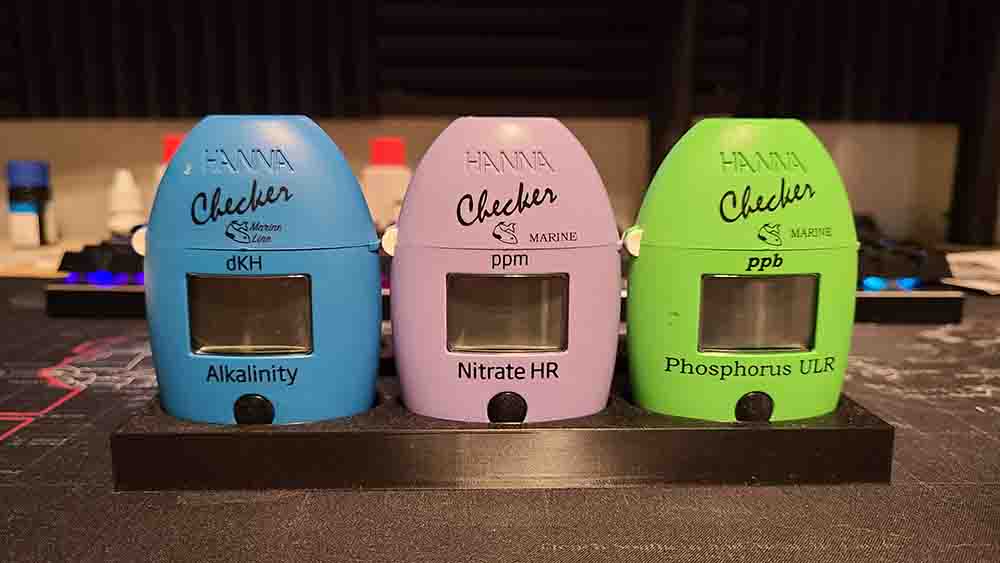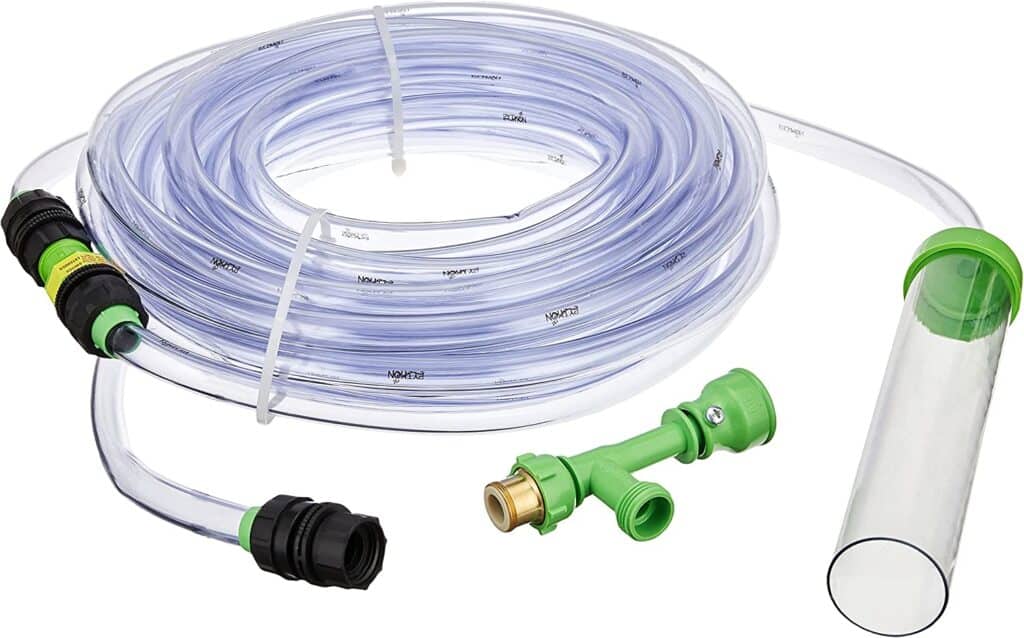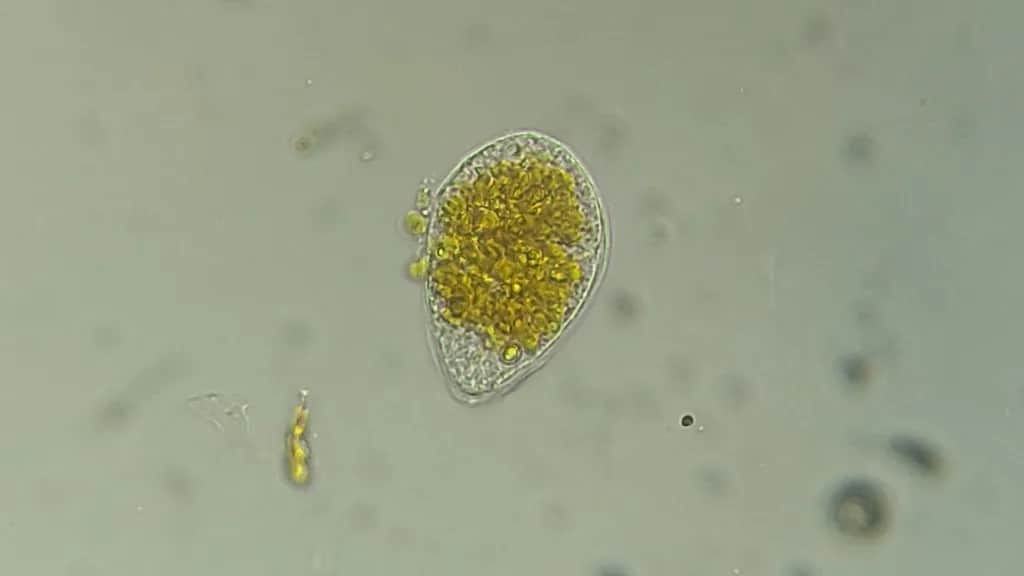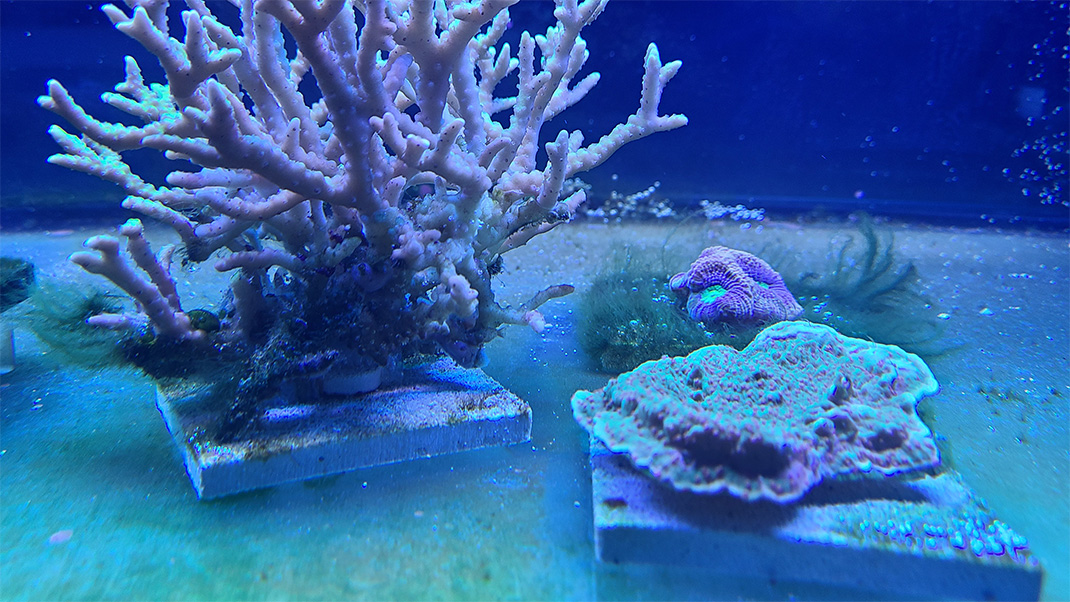Get rid of hair algae in 3 easy steps
Table of Contents
Hair algae is one of those things where it is very easy to get rid of, like aiptasia, once you understand what makes it grow. After you control them, you will become a pro at controlling hair algae in no time.
What causes hair algae
The three main things you need to control to get rid of hair algae are light, nitrates, and phosphates.
Light Cycle
Hair algae is a plant in its simplest form. It needs light to grow. If you reduce the photoperiod in your aquarium, the algae will have less time to photosynthesize. Start by reducing your lights by 2 hours a day. However, only reducing the lights cannot solve the problem itself. You also need to reduce the nitrates and phosphates.

Nitrates
Nitrates are consumed by hair algae and corals in our aquarium. It’s used as a food source to grow. If you have high nitrates over 10 ppm then you will likely see hair algae growing on the rocks and even sandbed of your aquarium. You will want to reduce your nitrates to around 5 ppm to limit the algae growth. If you have a lot of algae in your tank already, your test kit may read 0 ppm. Don’t believe the results. If you have hair algae in your aquarium, you have nitrates. The algae is just consuming all of the nitrates, giving you a false reading on your test kit.
Nitrate test kit
The best test kit hands down is the Hanna HR Nitrate test kit. Jake Adams at Reef Builders shared a cool hack with us using this test kit. Instead of using the powder reagent for the Hanna checker, you can use the liquid 2-part reagent from the API Nitrate test kit and it works just fine. This is how I use my Hanna Nitrate test kit. Thanks, Jake, RIP. You can read more here: API Nitrate Reagents are ‘Usable’ With the Hanna Checker
Phosphates
High phosphates are another nutrient source that contributes to hair algae growth. Typically you will want to keep your phosphate anywhere between 0.3 – 0.5. To monitor phosphates at this low level you will need a high-quality test kit like this Hanna ULR Phosphorus Checker.
Where do nitrates and phosphates come from
Nitrates and phosphates mainly come from the food you feed your fish and corals. It also comes from fish waste. The more you feed, the higher your nutrients will be.
Manually removing hair algae
If your tank is covered in algae you will need to first pull out or scrape off all the algae from your rocks, sandbed, and glass. This will take a while depending on how much is in your tank, so be patient. If you need to, take a break for a day and get back at it. For the stubborn algae that is on your rockscape, I use this nylon brush attachment from this kit. It comes with a razor attachment too which is a great tool to clean film algae and coralline algae off the glass.
After you remove the hair algae
Make sure to siphon out every piece of algae from your tank that you can so it does not settle somewhere else and continue to grow. The key is to physically remove the algae from your tank. If your aquarium has a sump, use filter socks to catch all of the free-floating algae that you cannot catch. Be ready to change your filter socks often as they will get clogged up very quickly. This also acts as a much-needed water change to help reduce your nitrates and phosphates.

Water Changes
You will need to do another water change every 2-3 days until your nutrient levels are brought back down. A 25% water change will be a good amount. Test your tank after each water change and track your nitrate and phosphate levels. Once nitrates reach 5 ppm and phosphates are between 0.3 – 0.5 you reach your target levels. You will still want to do your regular weekly or bi-weekly water changes to keep the nutrients on the low side and algae from growing.
Testing on a normal basis
After you have reduced your photoperiod, manually removed the hair algae from your aquarium and reduced your nutrients, do weekly water tests to stay informed of your nutrient level. Testing and viewing trends are keys to a healthy and successful reef tank. I like to use google sheets to keep track of all my tanks’ current and past test results. Each Saturday I will sit down and watch Melev’s Reefs live stream all while doing my weekly tests. After all like he says “Testing your aquarium saves lives”.
Cheat Code to get rid of hair algae
So, there is one last way you can get rid of hair algae pretty quickly without doing all of the work. I’ve done it as well as several other reefers. However, I’m not leaning towards using it anymore as there have been some discussions on YouTube about this product possibly affecting corals, mainly SPS, several months later. This product is thought to affect the algae within the SPS, causing it to possibly die or suffer several months later. It hasn’t been scientifically proven, it’s just a discussion I’ve listened to recently from some well-known reefers on YouTube.
This product is Fluconazole Reef Flux. I am not linking to it on purpose because I am weary to recommend using it until more data comes out on this product. It’s easy to find along with the instructions with just a simple google search. You will need to use this product at your own risk. I do not recommend you add this to your aquarium.

Beware of Dinoflagellates
After your nutrients are under control you will need to make sure to keep them in the range mentioned above. If you bottom out your nutrients and they are both 0 ppm you will start to see another issue that is very common in the reef aquarium hobby nowadays, which is dinoflagellates or dinos. This is a whole other beast you do not want to wake up in your tank. Many people have shut down their tanks due to this. The simple way to avoid it is to test your water weekly and pay attention to your trends. If your nutrients are getting too low, skip the water change that week and feed more.
Final thoughts
Hair algae is not that difficult to overcome. When we are first starting up our very first tank and everything is clean, white, and free of anything brown or green we get complacent. Then the ugly phase happens. It’s normal and happens to all of us. If you follow my simple steps you will no longer dread hair algae and know exactly how to beat it before it gets out of control.


